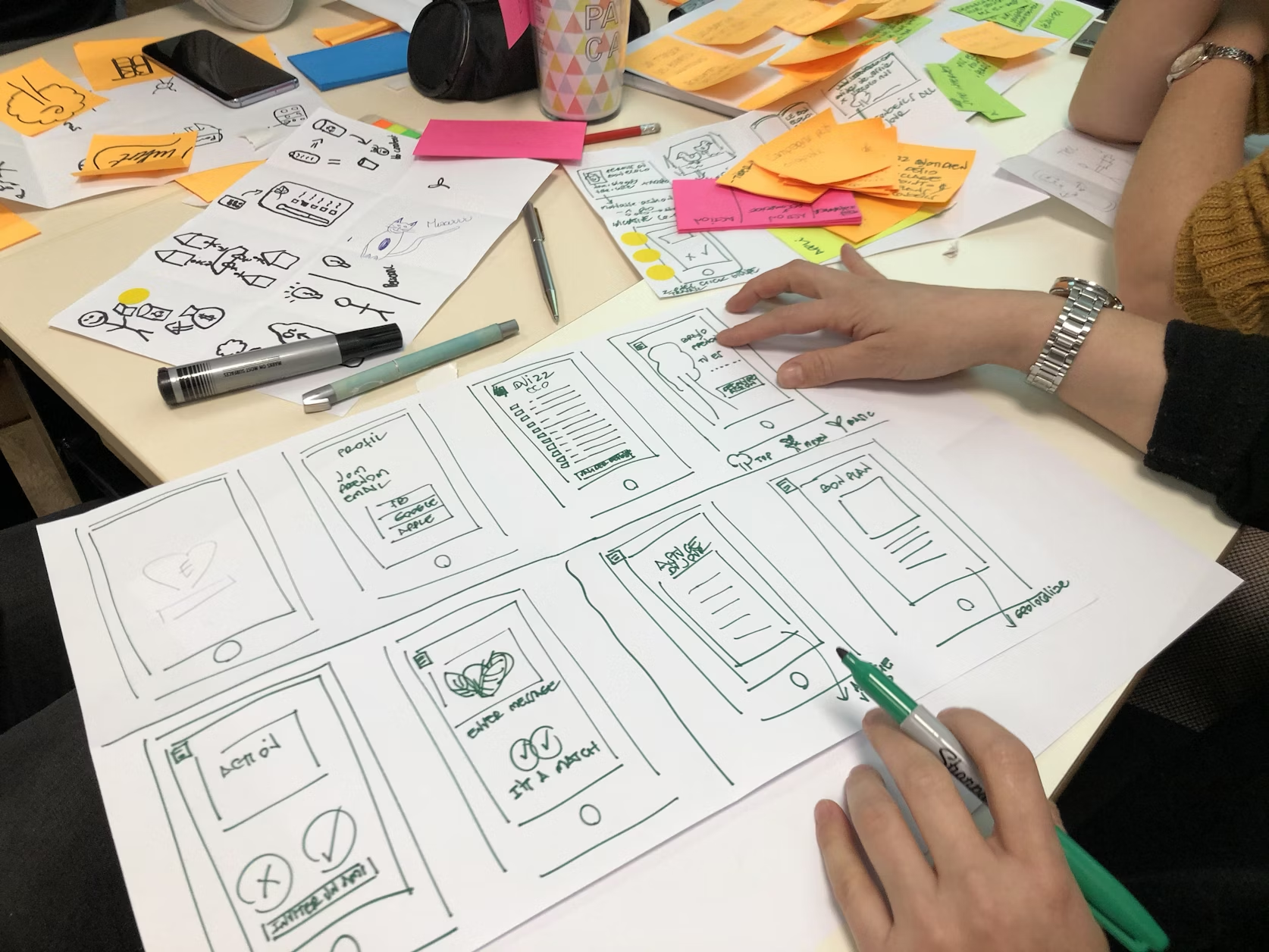
User experience (UX) has become the primary focus of app development. With a multitude of apps competing for users’ attention, simply providing basic functionality is no longer enough.Users expect easy navigation, personalized interactions, and genuine engagement. UX design is the bridge between technology and human needs. In this new era of UX, the emphasis is not just on flashy designs but on creating meaningful, inclusive, and adaptable digital experiences.
The goal of using personalization, accessibility, and immersive technologies is simple – to design applications that put users first. This article will explore the three most important UX design trends currently influencing app development. We will highlight how these trends enhance user-centric experiences and why businesses must adopt them to stay competitive.
Personalization and Adaptive Experiences
Today’s users expect apps to feel relevant, intuitive, and designed with their needs in mind. According to Forbes, a study was conducted with 1,000 consumers in the U.S. to understand the value of personalized experiences. The outcomes were remarkable. According to 81% of respondents, businesses that provide customized interactions are preferred. Additionally, 70% of respondents stressed the value of personalized services. Consumers also want this level of personalization to extend to the platforms they use.People today are looking for apps that feel as if they were crafted specifically for them. At its core, personalization leverages data and artificial intelligence (AI) to create unique content, features, and interactions tailored to individual preferences. Adaptive experiences take personalization further by adjusting in real-time to user behavior and context. For example, what if an app could switch to larger buttons and voice commands when you’re driving? Or recommend content based on your location, the time of day, or even your mood? These dynamic adjustments ensure the app stays useful and relevant in different situations.
Ethical UX Design
In recent years, the topic of ethics in UX design has become increasingly prominent. Designers aim to create engaging and enjoyable user experiences. However, there is a fine line between user-centric design and manipulative practices that exploit human psychology. Ethical UX design ensures that respect for users’ autonomy, well-being, and trust takes precedence over short-term business metrics.One of the biggest concerns in this space is the rise of dark patterns. Endless scrolling that fuels addictive behavior, hidden subscription cancellations, or anxiety-inducing push notifications are common examples. As per Games Hub, a study examined the prevalence and effects of dark patterns in video games among Australian adults. The research found that about 95% of participants had encountered dark patterns. Also, over 83% reported negative consequences from these experiences.Real-world cases have pushed this issue further into the spotlight. Parents have filed lawsuits against Meta platforms. They claim that Instagram’s addictive features and harmful content have contributed to mental health issues among minors. TruLaw notes that the lawsuit argues that Meta prioritized engagement over user safety, exposing vulnerable individuals to psychological harm.
When you find out more about such cases, it becomes clear that they serve as a wake-up call for app developers. Design decisions carry significant real-world consequences, which can sometimes lead to legal repercussions. Adopting ethical UX necessitates a shift in mindset. Designers need to ask – “ How can we make users’ time on this app healthier, more meaningful, and positive?” This entails building in screen time reminders, steering clear of manipulative design, and promoting content that supports well-being.
Transformative Experiences with AR and VR
Immersive technologies like augmented reality (AR) and virtual reality (VR) are reshaping how people interact with apps. They are no longer limited to gaming. These innovations are becoming mainstream tools that enhance everyday digital experiences. The market reflects this momentum. The global augmented reality market was estimated at USD 83.65 billion in 2024. Grand View Research projects that the market will reach USD 599.59 billion by 2030. This is at a CAGR of 37.9% from 2025 to 2030. The growth is largely driven by advancements in both AR hardware and software.
AR employs devices like smartphones, tablets, or AR glasses to seamlessly incorporate digital elements into the physical world. For example, apps like IKEA Place enable users to see how furniture would look in their homes before they buy it. VR goes further, immersing users in fully digital environments. Industries from real estate to fitness are adopting VR for virtual tours and interactive workouts.
In app development, VR fosters multi-sensory experiences that create deeper emotional connections between users and content. For instance, a recent study by NIH analyzed user feedback from two existing VR relaxation apps. The insights were used to design a new smartphone-based VR relaxation app to help individuals manage stress. Users consistently appreciated natural and calming backgrounds, dynamic environments, and customizable options. From a UX perspective, the opportunity is huge. However, the challenge lies in creating AR and VR experiences that are intuitive and accessible. Designers must ensure these elements feel natural and not overwhelming, while also considering accessibility for users with limited mobility or visual impairments.
FAQs
What is the next big thing in UX design?
The future of UX work will continue to be shaped by automation and augmentation. There will be an increase in the intelligence and accessibility of tools that simplify the research process and accelerate tedious design activities. This will enable practitioners to focus on more strategic, high-value tasks.
How do micro-interactions affect user satisfaction?
Micro-interactions are small animations designed to enhance the user experience by providing visual cues. Despite being tiny, these animations have the power to transform boring tasks into unforgettable experiences. They are designed to enhance the product’s overall usability by making it more efficient, engaging, and intuitive.
Why is it crucial to take accessibility into account when designing apps?
Accessibility is a vital component of the development process. It guarantees that websites and applications are inclusive and usable by all individuals, regardless of their abilities or limitations. By incorporating accessibility testing, designers can enhance the user experience, comply with important legal requirements, and uphold ethical design practices.
The future of app development lies in understanding that technology should serve humanity, enhancing our experiences rather than exploiting them. By adhering to these principles, developers can create applications that are not only functional but also truly user-focused. This approach paves the way for a more considerate and thoughtful digital future.



















